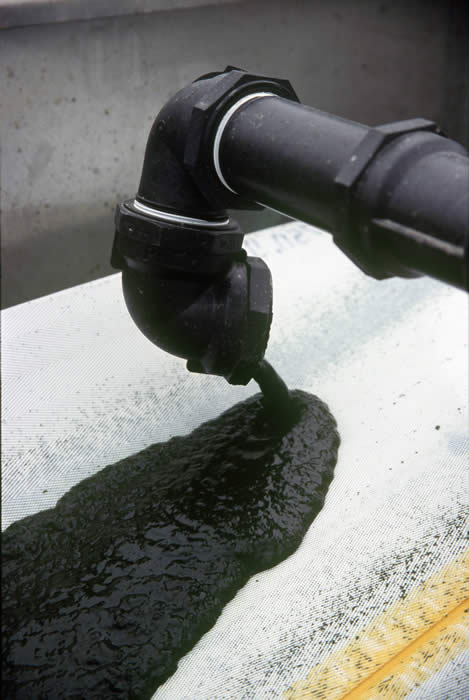This New Scientist video is a superb illustration of the tough emissions targets the world needs to be thinking about. More details in the NS story here. The basic premise is that if we take a 2ºC target seriously, then we have to limit our total emissions to 2050 to about 750 billion tonnes of carbon. Then divide that up by the current population of the world, and allocate countries a carbon budget, based on their population, that they can burn by 2050. Not good news for big emitters like the US, which would burn its total budget in about 12 years at current rates. As the presenter suggests, this is only a thought experiment not a model for policy, but it provides a realistic context for policy making. Required viewing.
Category: Climate business
Celsias NZ up and running
Celsias is a world famous (and not just in NZ) web site with Kiwi roots. They’ve finally got a New Zealand site up and running, and so I asked editor Chris Tobias to tell us what they’re up to:
 Celsias.co.nz has launched in New Zealand. The goal of the site is to help kiwis working in the “sustainability space” to come together, share knowledge, build community, and take action. Whether your passion is organics, climate change, green buildings, or healthy lifestyles, find more cool switched on people on Celsias.
Celsias.co.nz has launched in New Zealand. The goal of the site is to help kiwis working in the “sustainability space” to come together, share knowledge, build community, and take action. Whether your passion is organics, climate change, green buildings, or healthy lifestyles, find more cool switched on people on Celsias.
Fighting for the least bad outcome…
 I watched Stephen Sackur interview James Lovelock on the BBC’s Hard Talk programme on Tuesday evening. It was a depressing experience. Lovelock largely reiterated the things he said in The Vanishing Face of Gaia, reported in my review here.  I listened to it all again. His familiar and seemingly detached expectation that most of the human race will be extinguished  this century. His strong distaste for green solutions, especially wind power. His conviction that all our efforts should now be directed to preparing for life in a diminished world, and that the more time we waste on silly ideas like renewable energy the worse things will be in the end. At present countries like the UK can and should provide a haven for refugees from hotter climates, but there will come a time when the lifeboat is full. I’m not sure how he envisages events unfolding at that point.
I watched Stephen Sackur interview James Lovelock on the BBC’s Hard Talk programme on Tuesday evening. It was a depressing experience. Lovelock largely reiterated the things he said in The Vanishing Face of Gaia, reported in my review here.  I listened to it all again. His familiar and seemingly detached expectation that most of the human race will be extinguished  this century. His strong distaste for green solutions, especially wind power. His conviction that all our efforts should now be directed to preparing for life in a diminished world, and that the more time we waste on silly ideas like renewable energy the worse things will be in the end. At present countries like the UK can and should provide a haven for refugees from hotter climates, but there will come a time when the lifeboat is full. I’m not sure how he envisages events unfolding at that point.
Aquaflow’s Aussie adventure
 Blenheim company Aquaflow, appropriately, is not standing still. BusinessGreen reports it has embarked on a fund-raising programme in Australia to attract financing for the first of up to 16 pilot plants to demonstrate its algae fuel technology. For those who aren’t familiar with the enterprise, it extracts wild algae at the point of discharge from the Marlborough sewage ponds as a feedstock for biofuels, and in the process produces a much-improved water quality to the extent that it meets standards for irrigation use. By comparison with some of the overseas ventures which select and contain the algae it’s low tech, with a low capital requirement, albeit with a lower fuel yield. And it’s authentically renewable, which cannot be said of some processes which are using CO2 from fossil fuel burning to enhance the growth of the algae. (Hot Topic has carried reports of the company’s activity here and here and here.)
Blenheim company Aquaflow, appropriately, is not standing still. BusinessGreen reports it has embarked on a fund-raising programme in Australia to attract financing for the first of up to 16 pilot plants to demonstrate its algae fuel technology. For those who aren’t familiar with the enterprise, it extracts wild algae at the point of discharge from the Marlborough sewage ponds as a feedstock for biofuels, and in the process produces a much-improved water quality to the extent that it meets standards for irrigation use. By comparison with some of the overseas ventures which select and contain the algae it’s low tech, with a low capital requirement, albeit with a lower fuel yield. And it’s authentically renewable, which cannot be said of some processes which are using CO2 from fossil fuel burning to enhance the growth of the algae. (Hot Topic has carried reports of the company’s activity here and here and here.)
The size of a cow
 NZ’s farming leadership remains in denial about the need for action on climate change, as a remarkable speech [full text, Stuff report] by Federated Farmers president Don Nicolson demonstrates. Addressing the Plant Protection Society’s annual conference in Dunedin yesterday, Nicholson took swipes at Keisha Castle-Hughes, Greenpeace and the Green Party:
NZ’s farming leadership remains in denial about the need for action on climate change, as a remarkable speech [full text, Stuff report] by Federated Farmers president Don Nicolson demonstrates. Addressing the Plant Protection Society’s annual conference in Dunedin yesterday, Nicholson took swipes at Keisha Castle-Hughes, Greenpeace and the Green Party:
It’s not the reality that Greenpeace or the Green Party informs people before they ‘sign-on’. There’s no hint of a real solution apart from some ‘great leap backwards’. No, the vision they extol is instead apocalyptic. It is designed to create a climate of fear and don’t the anti-progress agents love fear. A fear of no oil, rising sea levels, extinction and starvation. It’s moral brainwashing without facts or context.
No real solutions on offer? No facts to support calls for action? It looks to me like Nicolson’s the one who’s making stuff up — and leading NZ’s farmers down a commercially disastrous path in the process.
